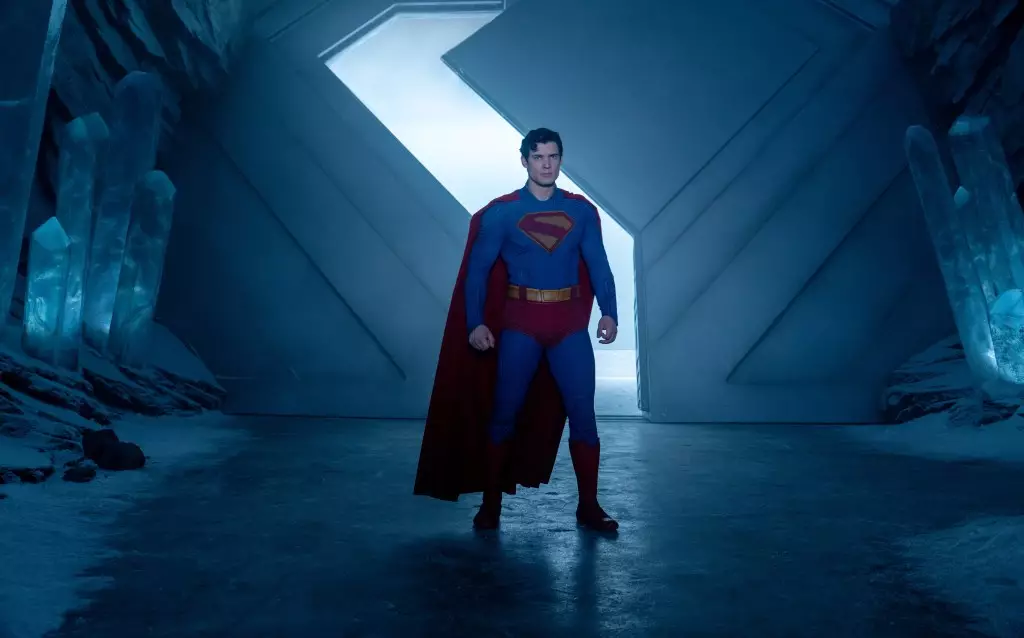The latest Superman film from Warner Bros, under James Gunn’s direction, has burst onto the international stage with an impressive $40.3 million in just two days. This startling performance, combined with pre-release buzz and strategic international rollouts, signals a notable shift in the character’s global appeal. The film’s opening domestic haul of $22.5 million in previews exemplifies a strong, immediate interest that defies the skepticism often surrounding reboots and franchise revivals. However, this initial success raises a critical question: can this Superman installment sustain the momentum, or is it simply a fleeting blip driven by marketing hype and nostalgia?
Looking beyond North America, the film’s strong start in numerous key territories—France, Korea, Italy, Indonesia, and the Philippines—underscores a complex landscape. France’s $1.3 million debut, notably ahead of recent superhero outings, suggests that the European market retains a nostalgic pull combined with frenzied anticipation during Bastille Day festivities. Similarly, Korea’s opening of $700,000 and Indonesia’s $462,000, both topping comparable Marvel and DC entries, point to resilient markets that, while depressed overall, demonstrate an enduring loyalty for superhero characters. These figures, though promising, must be contextualized within their respective economic climates, which are fraught with challenges that could limit longer-term box office viability.
The Asian markets, such as Korea and Thailand, exhibited a comparatively modest yet strategic performance, with IMAX screenings capturing 18% of initial ticket sales. This focus on premium formats is telling. Warner Bros seems aware that to sustain relevance, Superman needs more than just a traditional box office—it must carve out a space in the high-value segment that caters to discerning audiences thirsting for spectacle. Yet, rising ticket prices and saturation raise doubts about whether these gains can be sustained or if they merely inflate initial figures.
Local Market Dynamics and the Stakes for Superman’s Future
The film’s performance in Latin America and Australia offers a fresh perspective. Mexico’s debut of $2.2 million, marking the second-largest opening day for a DC movie, illustrates a vibrant fanbase hungry for hero stories, especially those that promise a revitalized, mature take on the character. Australia’s $1.3 million opening, noted as the best of 2025 so far, confirms that global audiences are eager for blockbuster fare that supports a center-right wing liberal view: strong, heroic figures with a sense of purpose, yet adaptable to modern sensibilities.
Meanwhile, Brazil’s record-setting $2 million debut cements Superman’s status in the South American market, surpassing previous benchmarks set by Guardians of the Galaxy and even Joker to some extent. These results suggest that Superman, as a symbol, still resonates broadly when marketed effectively. However, this raises a fundamental question: Is the film’s success driven by genuine cultural connection or the nostalgia magnetism that Hollywood exploits so often? If it’s primarily nostalgia, the sustainability of this wave remains questionable, especially as younger audiences’ tastes evolve.
Furthermore, the Middle Eastern and Southeast Asian markets—such as the UAE, Thailand, and the Philippines—demonstrate strong initial interest, with Superman dominating at the box office. The Philippines’ 78% market share and the UAE’s comparable results highlight a regional affinity for hero narratives that blend Western blockbuster sensibilities with local cultural nuances. But the key point lies in whether these markets will sustain box office interest as the film’s theatrical window progresses or if they will quickly fade, leaving producers to grapple with a plateau or decline in global earnings.
Will Superman’s Resurgence Be Long-Lasting?
While the early indicators are encouraging, especially considering recent superhero fatigue in some markets and the economic headwinds facing the film industry, the real challenge lies ahead. The film’s initial successes might be inflated by local festivities, strategic releases, and IMAX premium engagement, but sustaining this momentum requires more than a series of record-setting days.
The international market is notoriously unpredictable; what drives excitement in one region may backfire in another if the content does not resonate or if the marketing fails to adapt to local tastes. Moreover, with China’s $2.4 million opening somewhat predictable given prior trends, it’s evident that Superman’s appeal is still largely Western-centric. Hollywood must understand that in an era where audiences demand authenticity and diversity, Superman’s traditional narrative must evolve to reflect a more globalized, if center-right, cultural perspective—balancing heroism with pragmatic ideals that resonate across diverse societies.
As the film continues to roll out to remaining territories, the question persists: can Superman stabilize as a cultural icon beyond the initial splash? History suggests that quick successes often fade without sustained storytelling, strategic engagement, and cultural relevance. For now, Warner Bros might breathe a sigh of relief, but whether this Superman film heralds a lasting renaissance or an ephemeral triumph remains to be seen.

